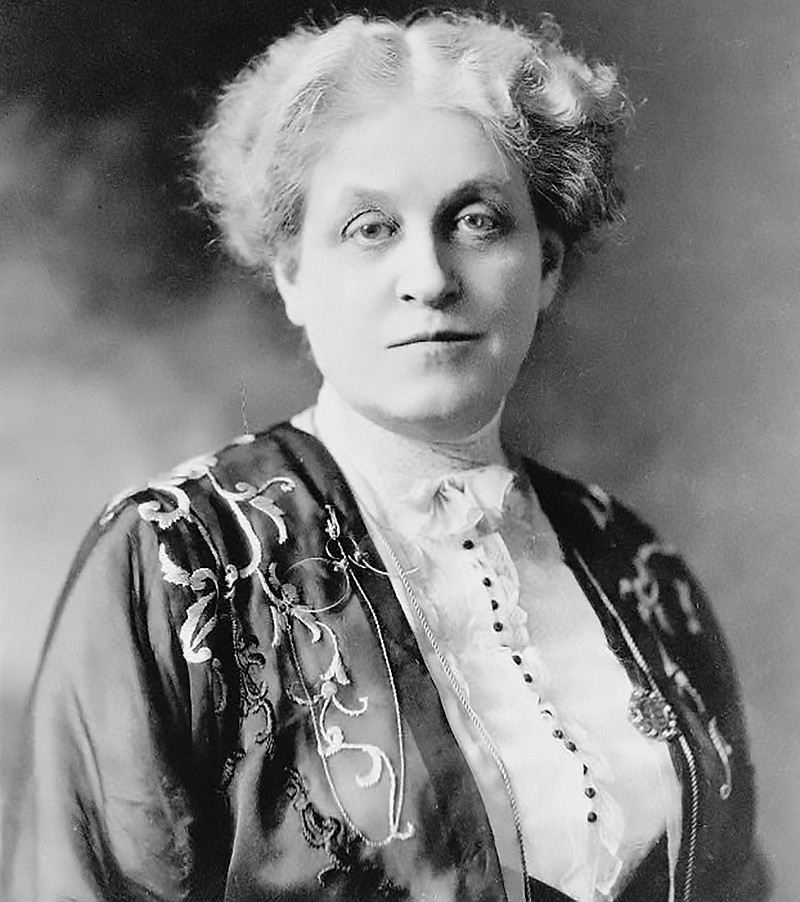Carrie Chapman Catt was a member of the "old guard," having succeeded Susan B. Anthony as president of the National American Women's Suffrage Association in 1900. Born in 1859, she was a perfect example of an "Edwardian Lady" - polite, with proper manners befitting the role she took on after the death of her husband, San Francisco newspaper editor Leo Chapman, in 1886. In 1890 she married wealthy engineer George Catt, who gave his blessing for her to spend at least four months a year on women's suffrage efforts.
In 1904 she resigned that position to care for her ailing husband. Following his death in 1905, and Anthony's death in 1906, she got back into the suffrage movement and in 1915 was re-elected President of NAWSA. She picked up where she left off, methodically working to urge each state to give women the right to vote under her "Winning Plan." She grew the organization to more than two million members by 1917. During that time, she founded the Woman's Peace Party with Jane Addams, and supported the war effort.
Carrie continued to promote the 19th Amendment, touring the states until it was passed by Congress in May 1920. A cablegram from President Woodrow Wilson to Carrie read "Glory Hallelujah!"
One of Carrie's rivals was Alice Paul, her junior by 26 years. (More on her in April HER.) Alice founded the National Woman's Party, and took a different approach to promoting women's rights. While seeking the same end, they often were at odds.
Carrie continued to speak out against the NWP and their tactics. She felt that Alice made suffragists look ridiculous, rather than respectable.
In 1919, Congress voted to send the "Susan B. Anthony Amendment" to the states for ratification. A year later, the required 36 states had ratified the amendment, making it the 19th to the Constitution.
It was Carrie who received the credit in the press for doing the work that won the victory.
Carrie went on to oversee the transition of NAWSA into the League of Women Voters. She traveled and extended her work throughout Europe and South America. In 1923 she started the International Woman Suffrage Alliance and met with Mussolini in Rome and spoke directly to him. In 1925 she founded the Committee for the Cause and Cure of War.
Continuing her passion for supporting the U.S. in war efforts, she formed the Protest Committee of Non-Jewish Women Against the Persecution of Jews in Germany in 1933. The organization sent a 9,000-signature petition to Hitler condemning violence against German Jews. Her work to make it easier for Jews to find refuge in the U.S. led to her being the first woman to receive the American Hebrew Medal. She died in 1947 and was buried in Woodlawn Cemetery in the Bronx, New York.
While Carrie and Alice both had distinctive roles in getting women's voting rights in this country, Carrie - with her proper ladylike mannerisms and steady, responsible forward movement through the states - kept going on a global level, eventually sparking change throughout the world.

